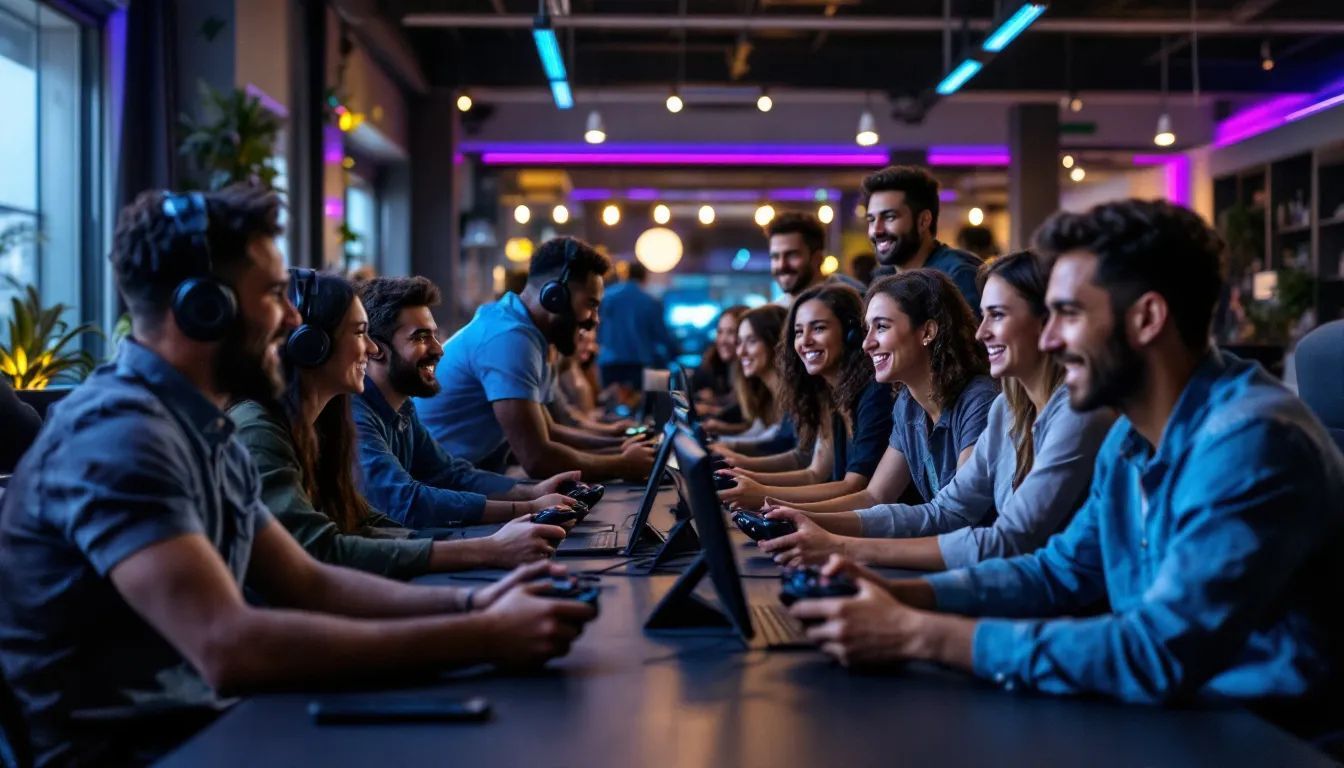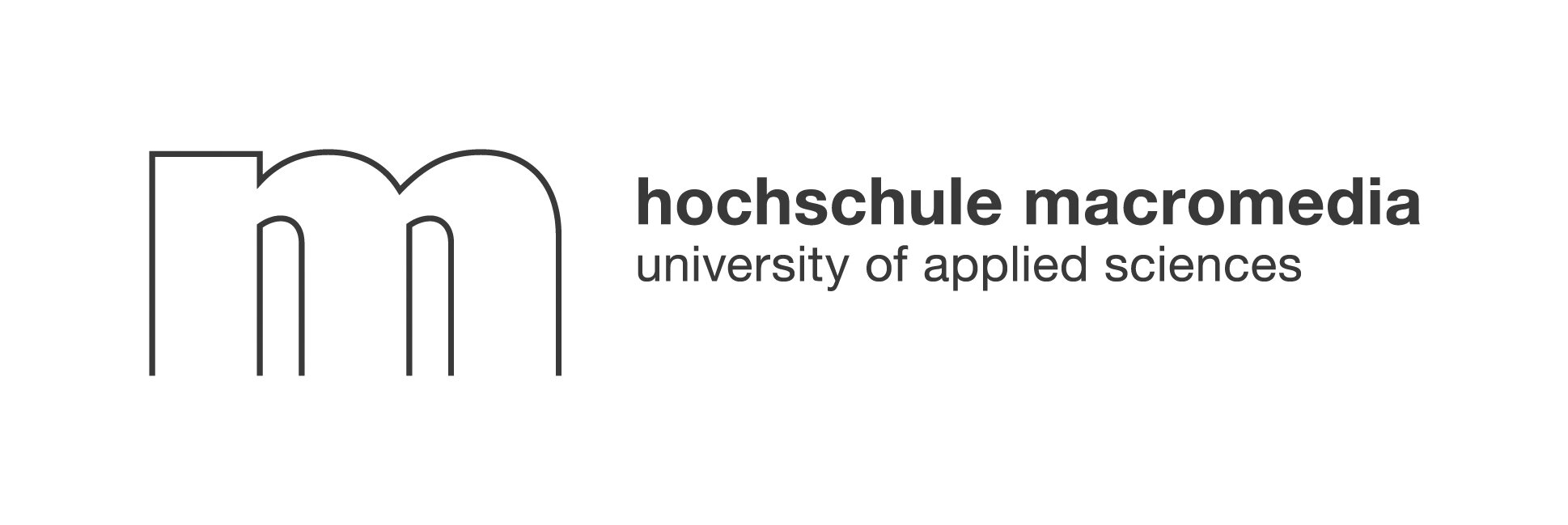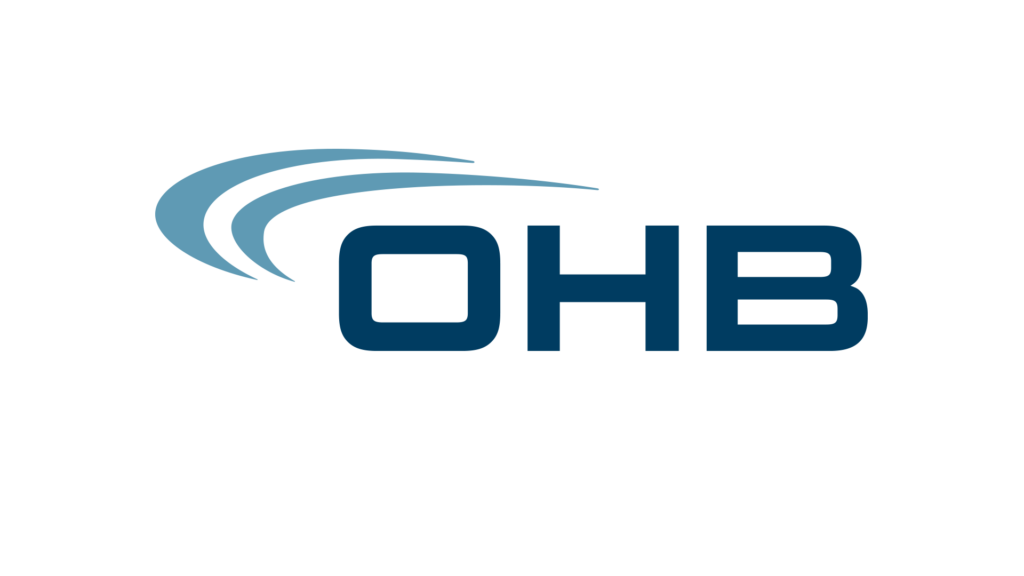In today’s workplace, innovative approaches to team engagement are vital. Employees crave organic interactions that spark enthusiasm, collaboration, and creativity. This guide explores Gaming team events and how they can revolutionize traditional team-building approaches. By integrating playful experiences with tailored activities, teams can unlock their full potential. Let the journey into tech-enhanced, dynamic team bonding begin!
Understanding Gaming Team Events
What Are Gaming Team Events?
Gaming team events are emerging as a transformative way to build cohesion among coworkers. These activities leverage competitive and cooperative games to help teams connect on a personal level. By stepping away from conventional meeting formats, gaming-inspired team bonding provides an outlet for creativity and stress relief. In this section, the focus is on understanding what these events entail and how they provide a refreshing alternative to day-to-day work challenges.
At their core, these events involve interactive sessions that can range from esports mini-tournaments to virtual board game meetups. They are designed to be fun, ensuring participants can relax and engage without the pressure of formal work scenarios. As a result, employees are encouraged to be themselves and build genuine relationships.
Gaming nurtures creativity and collaboration through playful competition.
Authentic bonds are formed when colleagues play together, not just work together.
The benefits go far beyond mere entertainment. They allow for real-time problem solving, quick decision-making, and strategic thinking. Moreover, these experiences help dismantle the silos that often restrict open communication. The incorporation of technology further enhances these interactions, making it easier to bring together hybrid or remote teams in a unified digital space.
In this section, notice that Gaming team events are setting a new standard in employee engagement—a standard that champions fun, innovation, and inclusivity.
Benefits of Gaming Team Events
The advantages of integrating gaming-inspired activities into team-building practices are diverse and far-reaching. Gaming team events foster an environment where employees can unwind and recharge, boosting morale and overall productivity. When team members participate in these experiences, they practice strategic collaboration, improve communication skills, and ultimately build trust. Furthermore, the dynamic nature of games provides a safe environment to experiment with ideas and cultivate creative problem-solving techniques.
In addition, these events help to break down hierarchical barriers and create a more inclusive workplace culture. They encourage informal interactions, making it easier for employees from different departments or job roles to connect. This seamless exchange of ideas often results in innovative solutions to work challenges, as colleagues feel more empowered to contribute their unique perspectives.
Some of the key benefits include:
- Enhanced interpersonal communication
- Improved stress management and well-being
- Increased creativity and collaborative problem solving
Engagement blossoms when teams play together.
Trust is built through shared experiences on the game floor.
Through the creation of a fun and relaxed atmosphere, Gaming team events can contribute to a long-lasting, positive workplace culture. When teams feel connected, they are more likely to exhibit resilience and adaptability, both of which are crucial for navigating today’s rapidly changing business landscape.
Planning Your Gaming Team Event

Setting Goals and Objectives
Successful team events hinge on clear, attainable goals. To design an effective gaming-inspired team-building activity, organizers must start by defining what they hope to achieve. Common objectives might include boosting employee well-being, fostering innovative thinking, or strengthening communication pathways among colleagues. Establishing these goals early on provides a roadmap that ensures every aspect of the event works in harmony with the overall strategy.
An effective strategy for planning involves these steps:
- Identify specific challenges or gaps in team dynamics.
- Determine how a playful, game-based experience can address these needs.
- Set measurable goals, such as increased engagement levels or improved collaboration scores.
Clear objectives turn a fun activity into a transformative experience.
Well-planned events empower teams to reach new heights together.
Within this context, integrating Gaming team events is essential as it aligns playful interaction with strategic organizational goals. By focusing on curated, micro-events that involve small groups (three to four participants), companies can create personalized experiences that resonate deeply with attendees. This approach minimizes planning friction while enhancing the spontaneity and organic nature of the gathering.
Moreover, setting clear expectations and deliverables also helps the team to envisage the benefits. For instance, if the goal is to boost creativity, the event might include collaborative challenges that require innovative, out-of-the-box thinking. This targeted approach not only drives participation but also makes it easier to measure success in subsequent feedback sessions.
Budgeting, Logistics, and Scheduling
Effective execution of gaming-inspired team bonding requires thoughtful planning of logistics. Organizers must establish a realistic budget that covers all elements of the event—from technology and venue costs to facilitator fees and incidental expenses. Budgeting for micro-events, where a handful of participants engage in immersive activities, generally requires less financial investment while offering high engagement returns.
A logistical plan should address:
- Venue considerations for both in-person and virtual setups.
- Scheduling that accommodates different time zones, especially for hybrid teams.
- Technology requirements, ensuring that every participant can connect seamlessly.
Below is a table summarizing key logistical considerations for organizing successful events:
Efficiency in planning ensures the seamless flow of events, regardless of format.
Clear logistics underpin every successful team event.
In addition to financial planning, setting a consistent schedule is crucial. Establishing recurring micro-events can create a rhythm in the workplace culture, allowing teams to anticipate and prepare for these engaging sessions. The flexibility offered by AI-driven scheduling, as seen with innovative platforms, means that events can be dynamically adjusted to match team energy and workload patterns.
With a structured budget and logistics plan in place, organizations can confidently move forward in implementing events that drive meaningful engagement among colleagues.
Engaging Game Ideas for Team Building
Competitive Video Game Challenges
One exciting way to invigorate workplace culture is through competitive video game challenges. These sessions involve friendly matches using popular games on console or PC, where teams face off in timed challenges or cooperative missions. The competitive element adds urgency and excitement, driving participants to strategize and communicate effectively. For instance, teams might compete in tournaments that require real-time coordination and quick problem solving.
When planning such activities, it is important to integrate inclusive rules that ensure every participant, regardless of skill level, feels engaged. The seamless management of these events often relies on advanced scheduling technology and digital coordination tools. Embracing such experiences through Gaming team events paves the way for future work cultures that value both competitiveness and fun.
Some essential ideas for competitive challenges might include:
- Time-bound races through in-game levels
- Cooperative missions requiring joint strategy
- Leaderboards that track team progress over multiple sessions
Competition fuels creativity when it’s fun and fair.
Every victory in a game is a step toward better team collaboration.
In these challenges, a few bullet points to consider are:
- Clear instructions and rules
- Technology that supports seamless gameplay
- Rewards that recognize both individual effort and team spirit
By integrating competitive video games, companies can stimulate a lively energy that carries over to everyday work interactions. This approach not only breaks down structural barriers but also injects a dose of adrenaline and humor into the corporate environment.
Interactive Virtual Game Sessions
Virtual game sessions have become a staple in modern hybrid workplaces. These interactive sessions use online platforms to bring remote team members together for enumerative challenges and cooperative tasks. Innovative companies are now hosting dedicated virtual game nights, where employees can participate in themed events like trivia contests, virtual escape rooms, or board game simulations. This model of Gaming team events makes it possible to include all employees, irrespective of their location.
Interactive sessions harness the power of real-time collaboration and AI-driven pairing to facilitate spontaneous interactions. These micro-events typically involve a few participants in each session, ensuring that conversations are personal and engaging. The use of automated matchmaking tools allows for fair distribution of participants and creates opportunities for employees to interact with colleagues they might not regularly meet.
A well-organized virtual game session can include features such as:
- Real-time leaderboards and score updates
- Integrated video and chat features for seamless communication
- Thematic challenges that cater to diverse interests
Interactive virtual sessions bring teams closer, even from a distance.
Digital innovation transforms remote work into dynamic play sessions.
Additional benefits of these sessions include reducing digital fatigue and sparking light-hearted competition. They also provide a platform to exchange ideas and share personal stories, strengthening interpersonal bonds. A few key bullet points for virtual sessions include:
- Ease of access from any location
- Flexibility in scheduling short, focused sessions
- AI-orchestrated pairings that drive fresh interactions
The success of these sessions lies in their ability to replicate the spontaneous nature of in-person interactions while leveraging modern digital tools.
Tips for Hosting a Successful Gaming Team Event
Maximizing Engagement and Participation
Achieving high levels of employee engagement during playful events requires a strategic approach. One of the best ways to maximize participation is to cultivate an environment where everyone feels comfortable contributing. This can be achieved by utilizing dynamic icebreakers at the start of the session and encouraging everyone to share their perspectives. Building energy from the very beginning sets a positive tone that carries through the entire event.
In addition, facilitators should consider incorporating interactive elements such as live polls, instant feedback mechanisms, and spontaneous breakout sessions. The goal is to ensure that every participant gets a chance to engage and express themselves. By focusing on lively interactions, companies can prevent the rigidness that often characterizes traditional corporate meetings.
Key techniques include:
- Rotating small groups to promote personalized interaction
- Using real-time chats to address questions and maintain energy
- Providing digital rewards to recognize contributions
Engagement is the heartbeat of every lasting team experience.
Participation sparks the creative fire that propels teams forward.
A bullet list of practical tactics might be:
- Start with a fun icebreaker
- Use breakout sessions for small group discussions
- Incorporate live and interactive digital tools
- Recognize and celebrate individual contributions
By focusing on tactics that promote organic engagement, companies ensure that every moment of the event is dynamic and meaningful. This approach helps foster authenticity and paves the way for a more inclusive, vibrant workplace culture.
Technical Setup and On-Site Coordination
The technical and operational setup of an event can be the backbone of its success. Whether hosting an interactive online session or an in-person gathering, organizing a seamless experience demands careful attention to detail. For those events aimed at boosting team morale, ensuring the right infrastructure and coordination is fundamental.
First, organizers must ensure that all technology is tested and compatible. For virtual sessions, this might involve checking video conferencing software, ensuring stable internet connections, and verifying audio quality. For in-lab or in-office events, technical support should be on standby to troubleshoot any issues that may arise. Integrating specialized software tools can also streamline the event, providing features like live chat, screen sharing, and digital leaderboards.
Consider these best practices:
- Run pre-event technical rehearsals
- Assign a dedicated facilitator for on-the-day coordination
- Prepare backup options in case of technical failure
Below is a table outlining key technical setup considerations:
Technical excellence is the silent hero behind memorable events.
Smooth operations create the ideal stage for creative teamwork.
For on-site events, the physical environment must also be optimized. Comfortable seating arrangements, proper lighting, and an inviting atmosphere contribute significantly to participant satisfaction and engagement. With careful coordination and the right technology, the event becomes a seamless experience that amplifies team energy.
Virtual Versus In-Person Gaming Team Events
Pros and Cons of Each Format
When planning team-building activities, choosing between virtual and in-person formats can influence outcomes significantly. Each format brings its own set of advantages and challenges. Traditionally structured company events are often burdened by formality and logistical constraints. In contrast, well-curated Gaming team events offer a flexible, informal alternative that appeals to modern professionals.
In-person events provide face-to-face interaction, which can enhance communication and foster immediate rapport. However, they can suffer from overly structured formats and limited flexibility. On the other hand, virtual events allow for flexibility in scheduling and eliminate geographical barriers, yet they may risk a sense of isolation if not properly designed.
Consider the following points:
- In-person settings allow for spontaneous interactions and non-verbal cues.
- Virtual collaborations offer scalability and accessibility.
- Traditional formats may feel rigid and inhibit organic play.
- Gaming-inspired sessions are designed to be fluid and engaging.
Each format has its strengths and weaknesses, but innovation lies in blending the best of both.
Modern events must break free from rigidity to enable true collaboration.
A bullet list summarizing pros and cons:
- In-person: Rich interpersonal cues, but may feel formal
- Virtual: Accessible and flexible, but risk disconnection if not engaging
By understanding these differences, organizers can choose or combine formats that best suit their team’s needs. Innovative platforms now offer hybrid solutions that harness the strengths of both approaches, ensuring that every participant feels connected and engaged.
Best Practices for Hybrid Events
Successful hybrid events require thoughtful planning to seamlessly unite on-site and remote participants. In an era where many companies are transitioning away from rigid, traditional gatherings, innovative solutions can create a truly inclusive experience. Leveraging AI-driven tools to facilitate micro-events ensures that every attendee, regardless of location, can participate equally.
Best practices include:
- Adopt advanced scheduling and pairing algorithms to establish natural connections.
- Use interactive chat and video features to bridge the gap between physical and digital environments.
- Design activities that naturally encourage small-group interactions, which help minimize the disconnection that often plagues larger gatherings.
An ordered list of strategies for hybrid success:
- Ensure technical consistency across all platforms.
- Create breakout sessions that mix on-site and virtual attendees.
Hybrid events blend the best of both worlds when executed with precision.
Tech-driven pairing fosters a sense of belonging for every participant.
A bullet list of additional tips:
- Encourage feedback from both in-person and virtual participants
- Use creative mini-games to break the ice
- Leverage AI-driven scheduling to optimize group composition
- Maintain a consistent event theme to keep everyone engaged
Integrating these practices transforms rigid gatherings into dynamic experiences. By replacing traditional corporate events with flexible, micro-event sessions, companies can foster authentic connections that enhance overall workplace culture.
Measuring Success and ROI of Gaming Team Events

Gathering Feedback and Assessing Impact
Evaluating the success of team-building initiatives is essential for continuous improvement. Gathering actionable feedback can reveal how well employees resonate with playful, digital experiences. Post-event surveys and interactive feedback tools play a crucial role in measuring participant satisfaction and overall impact.
For instance, organizers might deploy an online survey immediately after the session, asking questions related to enjoyment, clarity of instructions, and perceived team cohesion. Furthermore, AI-enabled analysis of anonymous comments can provide insights into employee sentiment and identify opportunities to refine future events.
An ordered list of key metrics to assess impact:
- Participant engagement levels measured by active participation and feedback scores.
- Changes in team cohesion, communication quality, and creative problem solving.
Data-driven feedback transforms events into continuous learning opportunities.
Real insights pave the path for ever-improving team experiences.
When evaluating the success of these sessions, consider integrating both quantitative and qualitative data. Some essential metrics include improved collaboration scores and higher employee morale. By systematically analyzing this feedback, companies can ensure that each session builds upon the last, fostering a culture of ongoing improvement and organic connection.
Long-Term Benefits for Company Culture
The true value of innovative team-building lies in its long-term effects on company culture. Replacing traditional, rigid events with dynamic, playful experiences can spark lasting improvements in employee morale and productivity. Over time, these initiatives encourage an environment where creativity thrives and barriers between departments dissolve.
Employees who regularly participate in well-designed gaming-oriented activities often report higher levels of job satisfaction. They become more willing to experiment with new ideas, contributing to an overall culture of innovation. The investment in dynamic interactions pays off as workers feel valued and understood.
Consistent, playful interactions drive a culture of innovation.
Every micro-event reinforces a bond that shapes a brighter future for the company.
The long-term benefits are many:
- Increased trust and transparency in communication
- Elevated overall well-being and reduced stress levels
- Sustained improvements in cross-functional collaboration
By embedding these playful micro-events into the fabric of daily work life, companies can see a concrete uplift in not only employee engagement but also operational efficiency. When colleagues connect authentically, creativity flourishes and collective productivity rises, ultimately translating into improved business performance.
Future Trends in Gaming Team Events
Emerging Technologies and Game Innovations
The future of team-building is being shaped by rapid technological advances and innovative game concepts. New platforms are emerging that use AI and virtual reality to create immersive experiences. These innovations are not just about fun; they merge seamlessly with strategic organizational goals to enhance well-being and productivity.
Emerging technologies such as AI-driven matchmaking and virtual reality-enhanced environments can tailor micro-events to individual interests. For instance, AI chat-orchestrated pairings ensure that team members with complementary skills interact in a personalized manner. Future trends in Gaming team events point to the integration of mobile gaming experiences, augmented reality challenges, and even adaptive game scenarios that evolve based on real-time feedback.
A bullet list of upcoming trends includes:
- AI-powered personalized game recommendations
- Integration of virtual reality for immersive experiences
- Mobile and board game meetups tailored for small groups
- Adaptive gameplay that evolves with participant interaction
Technology is the bridge to a more connected, creative workplace.
Future innovations will forever change how teams play, bond, and perform.
These advancements are poised to replace the antiquated, overly-structured events of the past. Instead, organizations can expect a fluid approach that continuously adapts to employee needs while fostering competitive fun. The use of curated micro-events—taking cues from successes in activities like AI-coordinated yoga and cycling pilots—paves the way for unprecedented levels of engagement.
Evolution of Team Building Cultures
As workplaces evolve, so must the methods used to build team cohesion. Traditional corporate events are increasingly seen as outdated due to their rigidity and propensity to stifle creativity. In contrast, the future belongs to flexible, AI-driven micro-events that offer tailored experiences in a more dynamic, inclusive setting.
In this new paradigm, emerging innovations lean on playful competition and light-hearted interactions to drive engagement. The focus is shifting from large, cumbersome gatherings to intimate, technologically curated experiences that bring together small groups for focused interaction. This allows employees to connect more authentically, share insights, and inspire one another in real-time.
Some key elements in this evolution include:
- Transitioning from rigid, top-down structures to organic, employee-driven engagements
- Leveraging AI insights to design events that align with specific team dynamics
- Encouraging spontaneous interactions that break down traditional workplace hierarchies
Evolution is inevitable when innovation replaces convention.
Transformative team experiences thrive on authenticity and organic connection.
Ultimately, organizations that invest in these future-forward approaches can expect to see improved well-being, heightened creativity, and increased operational productivity. The shift from traditional events to dynamic, AI-tailored experiences signifies a new chapter in fostering workplace culture.
The Role of Neroia in Revolutionizing Workplace Culture
Midway through this discussion, it is important to highlight how platforms like Neroia are leading the change. Neroia is renowned for its social employee benefits platform, which enhances workplace culture by offering AI-driven recommendations for small-group activities such as virtual gaming sessions and micro-events. By minimizing the planning friction typically associated with traditional events, Neroia paves the way for spontaneous and authentic connection among coworkers.
Neroia’s innovative approach aligns perfectly with the emerging trends in employee engagement. The platform supports curated events, from esports mini-tournaments to virtual board game meetups, that are tailored to individual interests and schedules. This strategy not only boosts creativity and productivity but also ensures that interactions are organic and genuinely refreshing.
The company's focus on employee-centricity and privacy exemplifies a modern outlook that prioritizes both individual well-being and team success. By integrating AI-powered recommendations with insightful HR analytics, Neroia is effectively reinventing the way teams connect. This transformation promises a future where dynamic experiences replace rigid, one-size-fits-all events.
Conclusion
In conclusion, companies looking to invigorate their team-building efforts must reimagine the way they approach engagement. Traditional formats, with their overly structured and rigid frameworks, no longer resonate with today’s workforce. Embracing innovative practices—such as the curated micro-events exemplified by our discussion—can drive remarkable improvements in both employee morale and overall productivity.
The future of team bonding lies in dynamic sessions crafted through AI-driven insights, which promote authentic interactions, creative problem solving, and sustained well-being. Organizations are encouraged to explore these modern strategies, ensuring that every team experience is both fun and strategically aligned with company goals.
Playful innovation is the key to unlocking true team potential.
Future-forward events empower employees to connect on a deeper, more meaningful level.
As the landscape of workplace engagement evolves, forward-thinking companies will benefit from replacing outdated events with dynamic, tech-enhanced experiences. For a glimpse into the future of team collaboration, consider the tailored micro-events that are rapidly becoming the norm.
Remember to explore further and celebrate the spirit of togetherness. Keep an eye on emerging trends and ensure that your organization's journey toward a vibrant, engaging workplace is always evolving.
Neroia




